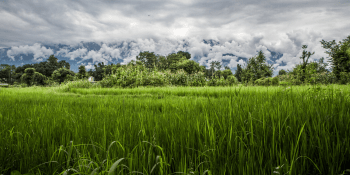Big Facts: Focus on Adaptation
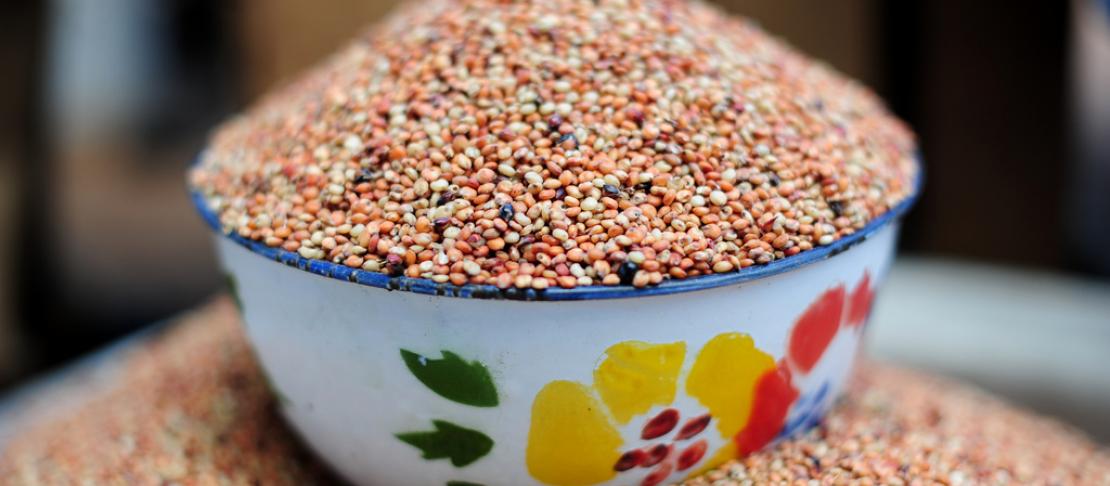
This story spotlights some of the Big Facts on adaptation, and is part of a special blog series to complement the new Big Facts infographics website.
In recent years, there has been an increased focus on adaptation as a solution to the growing risks associated with climate change. But although many viable adaptation options do exist, there will also be limits to our adaptation potential (Dow et al., 2013). What is more, not all adaptation is synergistic with mitigation; increasing agricultural production often increases total emissions.
Less is more – crops and climate change
In the face of climate change, farmers must change how and what they grow to adapt to changing climate conditions. If they don’t, a 1-2°C increase could cause a 10-15% reduction in yield for staple crops such as cereals. Luckily, it is often the simplest strategies which are the most effective: changing seed varieties and planting times would often be enough to continue to produce the same outputs. Water use efficiency and productivity could also be doubled on many irrigated farms facing water stress (Molden et al 2007).
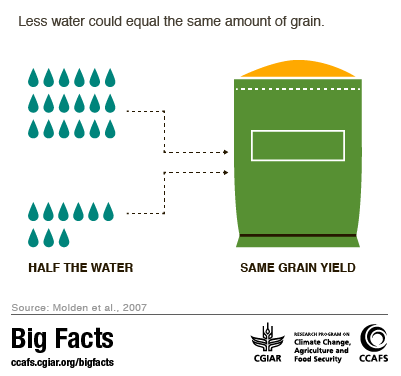
Adaptation means proper management
Land management is an important adaptation strategy, and again, it is often the simplest things that are the most important, such as reducing soil erosion and restoring degraded lands. In many areas, loss of fertile soil through erosion or other forms of degradation is reducing crop production. Increasing production under a changing climate will mean making prevention of soil erosion and restoration of degraded crop lands a top priority.
Managing our resources of wild crop relatives will also become increasingly important for adaptation. With changing climates, these wild relatives of current crops and underutilized species – such as climate-hardy species like sea buckthorn, moringa and millets – may prove very important to food security as conventional species face climatic hardship (Padulosi et al 2011).
Pests and diseases will also need to be managed as they too impact food production. Under climate change, new pests and diseases and changes in current disease and pest ranges are expected to emerge. Adopting cropping systems that favour biological control, breeding for resistance, or changing or maintaining cultural practices such as crop rotation, intercropping, switching cultivars, and changes in planting time are important strategies to deal with these emerging threats (Legrève and Duveille 2010).
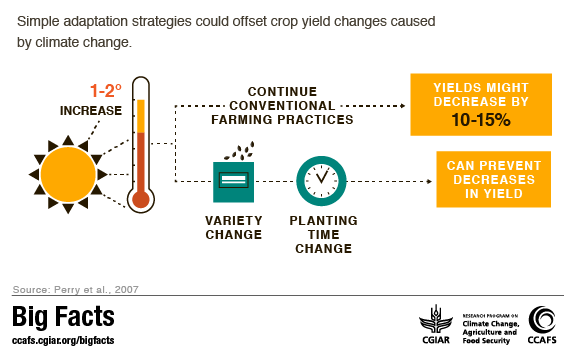
Diversify and conquer – Adapting livestock systems
Livestock systems are highly heterogeneous and already adapted to the specific climatic circumstances of their region. Due to their diversity, different production systems have varying capacities to adapt or to take on board the policy and regulatory changes that may be required to adapt to future climates.
In high-income countries, livestock systems are generally adaptable and resilient, while in low-income countries, households that are dependent on livestock keeping may be much more vulnerable to a changing climate; potentially leading to increased poverty and decreased food security.
Assuming that some crop or livestock failure is inevitable, research on micro-insurance, and indicators to anticipate famines and inform relief efforts will be important. Mixed crop-livestock farms will also be an important strategy for small-scale farmers around the world. There are many market pushes towards monocultures, but to achieve greater resilience, diversified and integrated farming systems are often the better option over monocultures (Herrero et al. 2010).
Fisheries face both gains and losses
Adaptation strategies for fisheries will vary considerably across the globe depending on the local impacts of climate change. However, the capacity to implement those strategies and adapt to climate change is unevenly distributed across and within fishing communities.
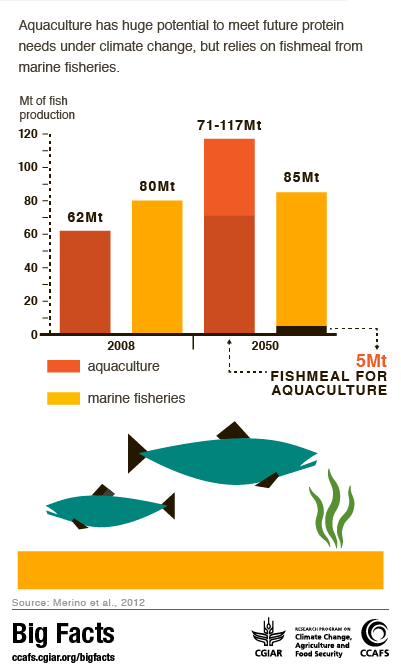
While this capacity is determined partly by material resources, networks, technologies and appropriate governance structures also play a vital role, so policies to increase capacity and reduce negative impacts of climate change will be needed.
Universally, we can also work to improve the general resilience of fisheries and aquaculture systems, for we know this will reduce vulnerability to climate change. For example, biodiversity rich systems are less sensitive to change than overfished and biodiversity poor systems.
Forests and climate change – an uncertain story
The adaptive capacity of forests remains uncertain, but they are generally able to withstand some levels of climatic stress, especially intact forests. For forest plantations, the array of technical measures is wide, as these ecosystems are generally intensively managed and the management can be modified to adapt to climate change.
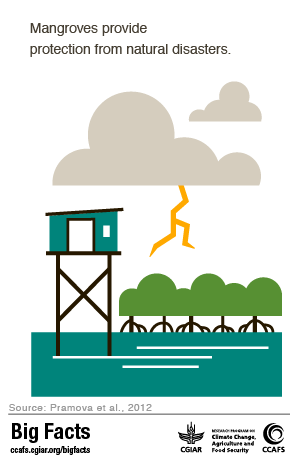
However, there is concern that the adaptive capacity of many forests will not be sufficient to adapt to unprecedented rates of climate change that are expected in some areas. The adaptive capacity of forests will also have both direct and indirect effects on the adaptive capacity of the people who live in and around them. For example, in Asia, losses of life, property and crops due to cyclones are lower in villages protected by mangrove forests (Pramova et al 2012), so protecting these areas is important in the face of sea level rise and other climatic threats.
Adaptation and waste
In many parts of the world, particularly in low- and middle-income countries, significant amounts of crops are lost before the food reaches the table. Adaptation in post-harvest phases of the chain will be important for adaptation and improving general food security. Policies to assist in this range from investments in improved storage facilities to securing formal credit, land rights, tenure and market access for small-scale farmers. Risk management, for example index-based crop insurance, support for traditional land management, knowledge systems and better access to climate information will also be important to reduce post-harvest losses and adapt to changes in climatic conditions (Howden et al. 2007).
Finally, transformational adaptation, for example assisting people in getting out of agriculture or to migrate to a different location might be necessary where incremental changes in farming and food systems cannot keep pace with climate change (Thornton et al. 2012).
HAVE YOUR SAY
Adaptation is a wide field with research constantly shedding light on new methods – from sustainable intensification to the use of wild relatives – so pinpointing the best and most recent research was not an easy task. We hope you will find some useful information, but if we have left out something important, we encourage you to let us know. As always, more information is available on the background pages and in the suggested readings of the Big Facts website.
Now you can get all the Big Facts on the links between climate change, agriculture and food security at ccafs.cgiar.org/bigfacts2014. The new site features over 100 stunning infographics that illustrate the most up-to-date, thoroughly researched information on these topics.
Big Facts is also an open-access resource. You can download and share the graphics with your friends and colleagues and use them in your presentations and reports. Please do not hesitate to send us any suggestions for improvements, either by commenting below or sending us an email.
This story is part of a series focusing on the Big Facts on various topics and in different regions; join the conversation at ccafs.cgiar.org/blog and on twitter using #bigfacts



